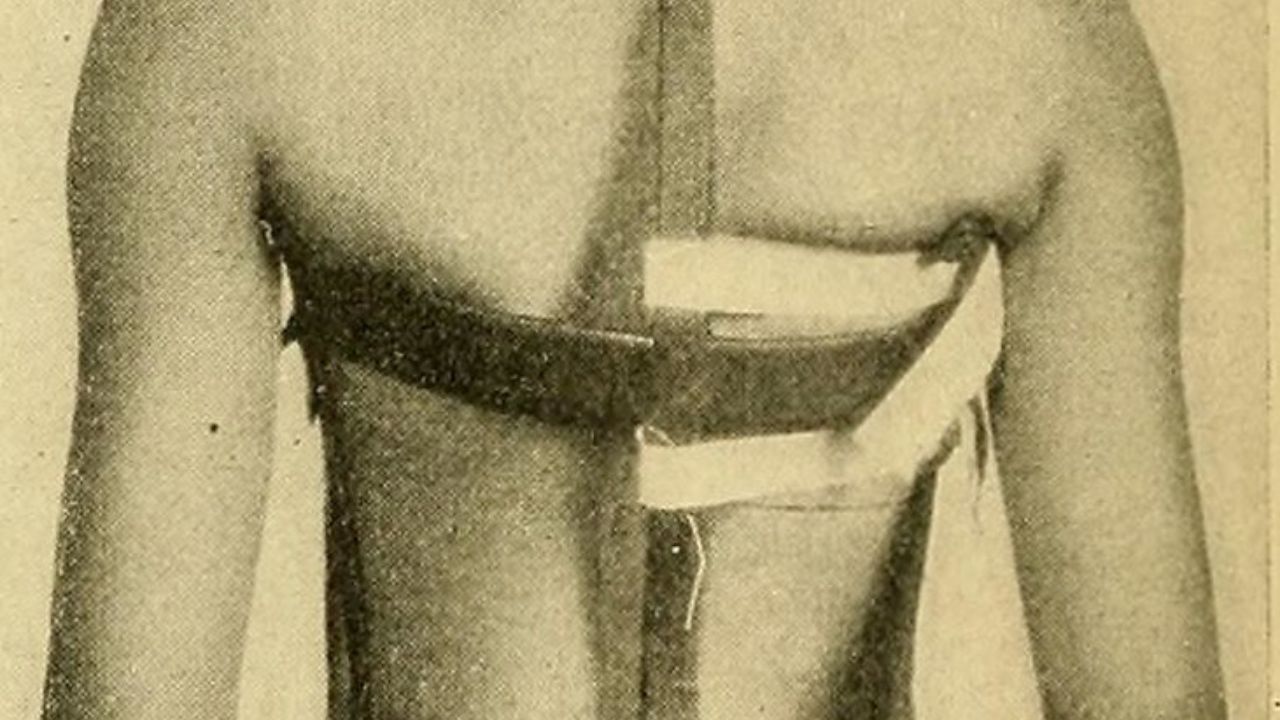
Maintaining good posture is crucial for overall health and well-being, yet many individuals struggle to achieve proper alignment. In this informative article, we will explore the top 10 paths to better posture that you need to try.
Backed by evidence-based research and expert knowledge, these strategies range from core-strengthening exercises and stretching routines to ergonomic tips for proper sitting and postural correction during sleep.
Take control of your posture and unlock the numerous benefits of improved alignment.
The Importance of Posture Awareness
Why is posture awareness so important?
Good posture is crucial for maintaining optimal health and well-being. It not only enhances physical appearance but also plays a significant role in overall functionality. When you have good posture, your body is properly aligned, reducing strain on muscles, joints, and ligaments. This can alleviate pain, improve breathing and digestion, and increase energy levels. Additionally, good posture promotes better balance and coordination, reducing the risk of falls and injuries.
To achieve and maintain good posture, it is essential to incorporate posture exercises into your daily routine. These exercises focus on strengthening the core muscles, improving flexibility, and promoting proper alignment. Examples of posture exercises include planks, bridges, and shoulder rolls. By regularly performing these exercises, you can train your body to maintain correct posture naturally.
Strengthening Your Core Muscles
Furthermore, incorporating exercises that specifically target your core muscles is essential for improving your posture and overall physical stability. Strengthening your core muscles not only helps you maintain proper alignment, but it also provides a strong foundation for all of your movements. Here are four effective strengthening exercises that can enhance your core stability:

Plank: This exercise engages your entire core, including your abs, back, and hips. Start by assuming a push-up position and hold it for 30 seconds to a minute, focusing on maintaining a straight line from your head to your heels.
Russian Twist: Sit on the floor with your knees bent and feet flat. Lean back slightly and lift your feet off the ground. Rotate your torso from side to side, touching the ground with your hands on each side.
Bicycle Crunches: Lie on your back and bring your knees up to a tabletop position. Alternate touching your left elbow to your right knee and your right elbow to your left knee in a cycling motion.
Superman: Lie face down with your arms extended overhead. Lift your arms, chest, and legs off the ground simultaneously, engaging your lower back and glutes.
Incorporating these strengthening exercises into your fitness routine will help you develop a strong and stable core, leading to improved posture and overall physical well-being.
Stretching Exercises for Better Posture
Incorporating a variety of stretching exercises into your daily routine can greatly improve your posture and help alleviate tension in your muscles. Standing exercises and desk stretches are two effective ways to target specific muscle groups and promote better postural alignment.
Standing exercises, such as the wall angel, can help strengthen the muscles in your upper back and shoulders, reducing the likelihood of slouching.

Desk stretches, like the chest opener and seated spinal twist, can counteract the negative effects of sitting for extended periods. These stretches can help release tension in the chest, shoulders, and lower back, promoting better posture and relieving discomfort.
Ergonomic Tips for Proper Sitting
Proper sitting posture is essential for maintaining good spinal alignment and preventing musculoskeletal issues.
Three important ergonomic tips for proper sitting include:
- Adjusting the chair height and angle to support a neutral posture
- Ensuring adequate lumbar support to maintain the natural curve of the lower back
- Taking regular stretching breaks to alleviate muscle tension and improve blood circulation.
Chair Height and Angle
One crucial consideration for maintaining good posture while sitting is adjusting the height and angle of your chair. Proper chair adjustment can significantly impact your sitting posture and overall comfort. Here are four important tips to optimize your chair's height and angle:
Adjust the chair height: Set the chair height so that your feet are flat on the floor, and your knees are at a 90-degree angle. This ensures proper blood circulation and reduces strain on your lower back.
Position the backrest: Angle the backrest slightly backward, around 100-110 degrees, to support the natural curve of your spine. Avoid reclining too far back, as it may strain your neck and shoulders.
Modify the seat angle: Tilt the seat slightly forward, about 5-15 degrees, to maintain a balanced posture and prevent slouching. This helps distribute your weight evenly and reduces pressure on your lower back.

Use additional support: Consider using lumbar support cushions or adjustable armrests to provide extra comfort and maintain proper alignment of your spine.
Lumbar Support Importance
The significance of proper lumbar support cannot be overstated when it comes to maintaining good posture and avoiding discomfort while sitting. Lumbar support refers to the support provided to the lower back region, specifically the lumbar spine. It plays a crucial role in promoting a healthy sitting posture by reducing strain on the lower back and supporting the natural curvature of the spine.
One of the key benefits of lumbar support is the prevention of back pain and discomfort. By maintaining the natural curve of the spine, it helps distribute the body's weight evenly, reducing the pressure on the lumbar discs and muscles. This, in turn, reduces the risk of developing conditions such as lumbar strain, herniated discs, and muscle imbalances.
There are various techniques to ensure proper lumbar support while sitting. One effective technique is using an adjustable ergonomic chair that provides adjustable lumbar support. This allows you to customize the support based on your individual needs and preferences. Additionally, using lumbar support cushions or rolls can also help maintain the natural curve of the spine and provide additional support.
Regular Stretching Breaks
Taking regular stretching breaks throughout the day is essential for maintaining proper posture and preventing discomfort while sitting. Incorporating chair exercises and desk stretches into your routine can help release tension in your muscles and improve flexibility.
Here are four effective stretches to try:
Neck stretch: Gently tilt your head to one side, bringing your ear towards your shoulder. Hold for 15-30 seconds, then repeat on the other side. This stretch helps relieve neck stiffness and tension.

Shoulder rolls: Roll your shoulders forward and backward in a circular motion. This exercise helps reduce shoulder tightness and promotes better posture.
Upper back stretch: Interlace your fingers in front of you and extend your arms forward, rounding your upper back. Hold for 15-30 seconds. This stretch targets the muscles between your shoulder blades.
Seated hamstring stretch: Extend one leg straight out in front of you and flex your foot. Gently lean forward, reaching towards your toes. Hold for 15-30 seconds, then switch sides. This stretch helps release tension in the back of your thighs.
Improving Posture Through Yoga
Improving posture through yoga can provide numerous benefits for overall alignment and body awareness.
Yoga poses help strengthen the core muscles that support proper posture and encourage a natural elongation of the spine.
Additionally, practicing yoga can promote mindfulness and body-mind connection, leading to improved posture and alignment in daily activities.
Yoga for Better Posture
Yoga is an effective practice for improving posture and enhancing overall body alignment. By incorporating specific yoga poses into your daily routine, you can address muscular imbalances, increase flexibility, and develop a stronger core. Here are four yoga poses that can help improve your posture:

Mountain Pose (Tadasana): Stand tall with your feet hip-width apart, grounding all four corners of your feet. Engage your abdominal muscles and lengthen your spine, imagining a string pulling the crown of your head towards the ceiling.
Cat-Cow Pose (Marjaryasana-Bitilasana): Begin on all fours, with your hands directly under your shoulders and your knees under your hips. As you inhale, arch your back and lift your chest (cow pose), and as you exhale, round your spine and tuck your chin towards your chest (cat pose).
Bridge Pose (Setu Bandhasana): Lie on your back with your knees bent and feet hip-width apart. Press your feet into the floor, lift your hips up, and interlace your fingers underneath you. Keep your thighs parallel to each other and engage your glutes and core.
Child's Pose (Balasana): Start on all fours and then sit back onto your heels. Extend your arms forward and rest your forehead on the mat. Relax your shoulders and breathe deeply, allowing your spine to lengthen and your back to release any tension.
Incorporating these yoga poses into your regular routine can greatly improve your flexibility and strengthen the muscles needed for proper posture.
Alignment Benefits in Yoga
The alignment benefits of practicing yoga can significantly improve posture and overall body alignment.
Yoga is not just a physical exercise, but also a practice that emphasizes proper alignment of the body. Alignment techniques in yoga focus on creating a balance between strength and flexibility, as well as maintaining a neutral spine and engaging the core muscles.

Yoga poses, such as Mountain Pose (Tadasana) and Tree Pose (Vrksasana), help to lengthen the spine, open the chest, and align the shoulders. These poses also strengthen the muscles that support good posture, including the back, abdomen, and glutes.
Correcting Forward Head Posture
One effective method for correcting forward head posture is by implementing specific exercises and stretches into your daily routine. These exercises target the muscles in the neck and upper back, helping to improve alignment and reduce the forward tilt of the head.
Here are four exercises for neck alignment that can help correct forward head posture:
Chin tucks: Gently retract your chin, bringing it back towards your neck. Hold for a few seconds, then release. Repeat several times.
Neck stretches: Tilt your head to one side, bringing your ear towards your shoulder. Hold for a few seconds, then switch sides. Repeat several times.
Shoulder rolls: Roll your shoulders in a circular motion, moving them up, back, down, and forward. Repeat several times.
Upper back stretches: Sit or stand with good posture, then interlace your fingers behind your back. Gently squeeze your shoulder blades together and lift your chest.

Tips for Proper Standing Alignment
Implementing certain strategies can greatly improve your standing alignment and contribute to better overall posture. Maintaining proper standing posture is essential for preventing back pain, muscle imbalances, and postural distortions.
To achieve optimal standing alignment, start by aligning your ears, shoulders, hips, knees, and ankles in a straight line. Engage your core muscles to stabilize your spine and avoid slouching or leaning forward. Distribute your weight evenly on both feet and avoid locking your knees.
Regular posture exercises, such as shoulder retractions, chin tucks, and gentle stretches, can help strengthen the muscles that support proper standing alignment. Additionally, be mindful of your body position throughout the day and make necessary adjustments to maintain good posture.
Postural Correction During Sleep
Significantly, in order to achieve better posture during sleep, it is important to prioritize proper alignment and make conscious adjustments. Sleep positions play a crucial role in maintaining good posture throughout the night.
Here are four essential tips for postural correction during sleep:
Back sleeping: Sleeping on your back with a pillow that provides adequate support for the natural curve of your neck and spine can help maintain proper alignment.
Side sleeping: If you prefer sleeping on your side, place a pillow between your knees to keep your hips aligned and reduce strain on your lower back.

Stomach sleeping: While it is generally not recommended due to the strain it puts on the neck and spine, if you must sleep on your stomach, use a thin pillow or no pillow at all to minimize the arching of your back.
Pillow support: Investing in a high-quality pillow that adequately supports your neck and head can greatly contribute to maintaining proper posture during sleep.
Using Posture Correctors and Braces
To optimize your posture, consider incorporating posture correctors and braces into your daily routine.
Posture correctors and braces are effective tools that can help improve your posture by providing support and alignment to your spine and shoulders. They work by gently pulling your shoulders back and aligning your spine into a more upright position.
Many individuals find that using posture correctors and braces not only helps improve their posture, but also reduces pain and discomfort associated with poor posture.
However, it is important to note that these tools should not be solely relied upon for long-term posture correction. Instead, they should be used in conjunction with other posture-enhancing activities such as regular exercise, stretching, and ergonomic adjustments.
Additionally, there are alternatives to posture braces such as posture exercises, yoga, and physical therapy, which can also be effective in improving posture.

Maintaining Good Posture Throughout the Day
Incorporate these tips into your daily routine to consistently uphold proper posture throughout the day:
Ergonomics at Work: Make sure your workstation is set up correctly, with your chair at the right height, your screen at eye level, and your keyboard and mouse within easy reach. Take regular breaks to stretch and move around.
Mindful Sitting: Be conscious of your posture while sitting. Sit up straight with your shoulders relaxed and your feet flat on the floor. Avoid slouching or hunching forward.
Stand and Stretch: Don't stay seated for extended periods. Stand up and stretch every 30 minutes to relieve pressure on your spine and promote better blood circulation.
Exercise for Posture: Incorporate exercises that strengthen core muscles, such as planks and bridges, into your fitness routine. These exercises help improve posture by supporting the spine and promoting proper alignment.
Frequently Asked Questions
What Are the Long-Term Effects of Poor Posture?
Poor posture can have significant long-term effects on overall health. It can lead to musculoskeletal pain, decreased mobility, and increased risk of chronic conditions. Practicing proper ergonomics, regular exercise, and maintaining a strong core can prevent long-term damage from poor posture.
Are There Any Specific Exercises That Can Help With Rounded Shoulders?
Exercises, stretches, chiropractic adjustments, and ergonomic modifications can all play a role in improving rounded shoulders. Implementing a combination of these interventions can help strengthen the muscles and correct imbalances, leading to better posture over time.

How Can I Improve My Posture While Using Electronic Devices?
Improving posture while using electronic devices requires implementing ergonomic tips and using a posture corrector if necessary. Proper positioning of the device, maintaining a neutral spine, and taking regular breaks can help prevent postural issues associated with prolonged device use.
Can Wearing High Heels Affect My Posture?
Wearing high heels can have a negative impact on posture, leading to back pain and compromised spinal alignment. The elevated heel changes the body's center of gravity, causing increased pressure on the lower back.
Are There Any Specific Sleeping Positions That Can Help Improve Posture?
Sleeping position benefits are often overlooked when considering ways to improve posture. However, there are specific positions that can help maintain proper alignment and reduce strain on the spine, such as sleeping on your back with a pillow under your knees.
 Mobility trainingHome Fitness RecoverySports Injury PreventionPersonal Physical TherapyOrthopedic SolutionsPrivacy PolicyTerms And Conditions
Mobility trainingHome Fitness RecoverySports Injury PreventionPersonal Physical TherapyOrthopedic SolutionsPrivacy PolicyTerms And Conditions
